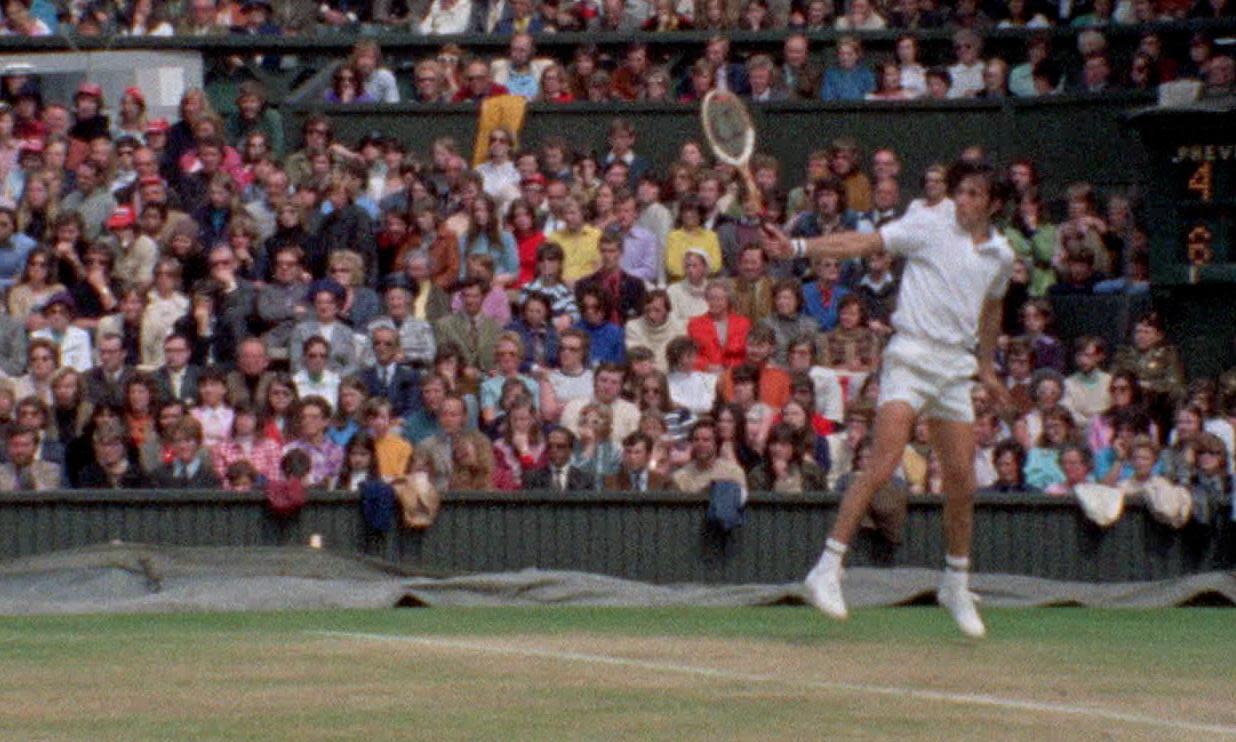‘I paid for it’: tennis bad boy Ilie Năstase revisits confrontational career

“We’d never seen a player like this,” says one contributor. “When Ilie was on the court, something was always happening,” says another. They are talking in a new documentary about Ilie Năstase, the original bad boy of tennis in the early 70s, which is screening at the Cannes film festival on Friday.
The film’s title is Nasty, the nickname that quickly attached itself to Năstase, whose on-court antics, petulant complaints and confrontations with umpires were barely thinkable in what had previously been a staid and well-behaved sport dominated by amateurism. The “open” era, in which grand slam tournaments started to offer prize money and allow professional players to compete alongside amateurs, had only started a few years earlier in 1968, and Năstase became one of the first high-profile beneficiaries.
Now 77, he remains unrepentant. “We wanted to be professional, but we had unprofessional umpires. For me, that was the problem. I never complained about something I wasn’t sure was wrong. I had to do right for myself. That’s why I said what I said and, of course I got banned, I got fined. I paid for it.” Now, he says, the situation is different. “They are so strict,” he says, “but when I was No 1 you could get away with more and more stuff.”
UK audiences are likely to remember Năstase for his only Wimbledon final, which he lost to Stan Smith in 1972; this was part of a purple patch in his career in which he defeated Arthur Ashe to win the US Open title the same year, and won the French Open in 1973 without dropping a set. In 1973 he was also named the No 1 player in the first ever ATP rankings. However, his manifest excellence was accompanied by unruly behaviour that on-court officialdom and the tennis rulebook itself proved ill-equipped to handle, and which led directly to the International Tennis Federation creating a professional code of conduct.
One of the paradoxes of Năstase is that, off the court, he appeared to be highly popular among his fellow professionals, with enthusiastic endorsements in the film from figures including Billie Jean King, Björn Borg and Jimmy Connors. In a period when the sport was considerably more comradely and accessible than it is now, Năstase cut a glamorous figure, like tennis’s answer to George Best, with an exoticism underlined by his Romanian heritage. In the 60s and early 70s, tennis was largely dominated by Americans, Australians, and western Europeans, so Năstase’s iron curtain background made him an unusual and mysterious figure.
Accompanied by fellow Romanian player Ion Țiriac, Năstase had to make his way on the tournament circuit with next to no financial support; in the film Țiriac says they saved money by sleeping rough, and selling their training shoes could make them enough money to feed their families for a month. Năstase says the story is only a slight exaggeration: “We didn’t sleep in the park; maybe a £1 bed and breakfast next to the park.”
Năstase’s mercurial nature has also led him into some darker episodes – principally a clash with Serena Williams in 2017 after he was overheard off mic apparently referring to her unborn child’s skin colour as “chocolate with milk”. He later apologised for the remark, as well as for insulting British tennis players Anne Keothavong and Johanna Konta during the same tournament. Năstase now blames an unfortunate translation from his original joke in Romanian for offending Williams. “It was an unfortunate situation, but I’m not a racist.”
Năstase is now thinking about his legacy. “It’s important for kids today to see what tennis was like then and I want to leave something behind for my family. I came out of Romania when I was 19, I learn fast, I love tennis. And I learn, if you put passion into it, you’re going to make it.”

 Yahoo Movies
Yahoo Movies 
